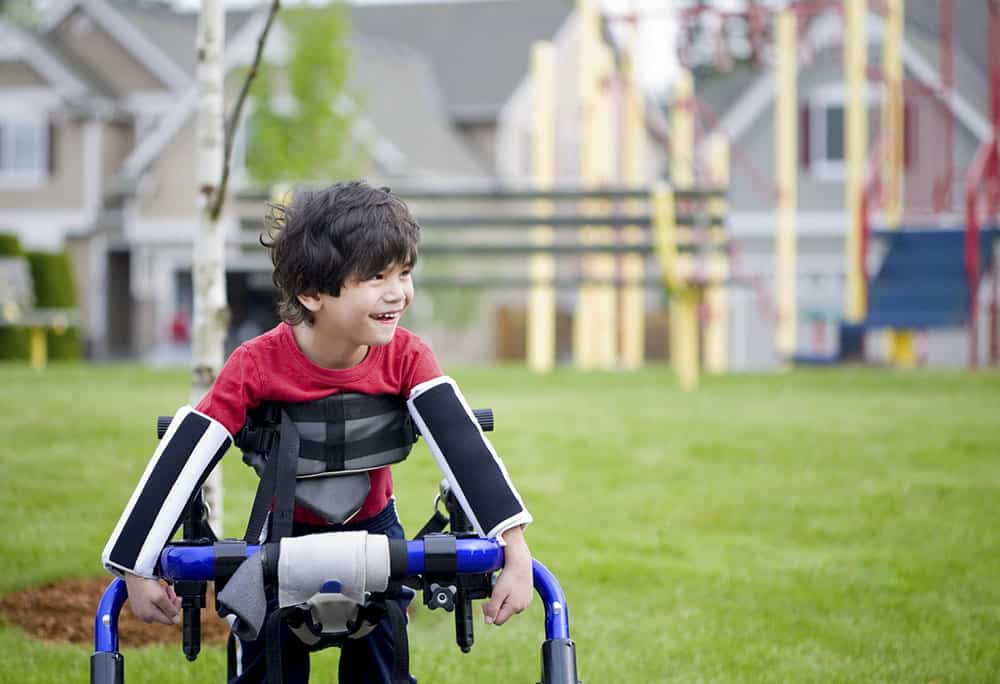The OT’s Perspective: Young people and the Disabled Facilities Grant
I’ve written before about the role that manufacturers and retailers can play in helping young people with disabilities, but this month I want to talk more specifically about the Disabled Facilities Grant (DFG), and how this can be used to help the young people you come into contact with, as well as the OTs who serve those young people.
The DFG is an avenue that more would do well to explore, for the following reasons:
- For children aged 17 years and younger, there is no “means testing” – it is applicable for all, regardless of how much money the parents do or do not have
- The DFG is for the child, not the property they live in, which means three disabled children living under the same roof would be entitled to three DFG applications
For those two reasons, the DFG is well worth investigating if you’re working with children, remembering that the works should be deemed “necessary and appropriate” by the council and/or NHS, and “reasonable and practical” from the housing department of your local council.
(It’s worth pointing out at this point that the DFG is not available in Scotland)
How can the DFG be used to help young people?
The DFG allows for adaptations to:
Provide access to and from the property. This includes things like:
- Grab rails for access
- Portable ramps
- Step lifts
- Platform lifts
- Concrete ramps
Provide access to principal family room
Do you widen doors to make wheelchair access possible?
Do you provide automatic door openers?
Can you create an open plan kitchen / diner for appropriate access?
Provide access to a bath and or shower (including toilet and wash hand basin access)
If a client can’t access a bath, shower, toilet or wash hand basin, the DFG can help make that happen to provide a wet room, or perhaps a specialist bath.
If these major works are not required or the customer is looking at low-cost, easier options, you may be able to provide equipment for example:
- A bath board
- A bath lift
- Grab rails
- Shower chairs (manual, attendant propelled, fold down and free standing)
- Raised toilet seat
- Lever taps
Provide access to a place to prepare and eat a meal
Clearly, a huge part of our role as OTs is to allow our clients to live as full a life as possible and that includes ensuring that meals can be prepared and eaten at home.
If you provide solutions to kitchen-use issues, the DFG could well be used to help a client acquire your product or service.
Consider equipment you can sell that would be helpful too, like a Muggi to carry drinks, Dycem non-slip mats or adaptive cutlery that can go with an adapted kitchen.
Provide access to a bedroom
If a client’s bedroom is upstairs, they’re most likely going to need a way to get up and down the stairs, and a stair lift, home lift, stair steady or extra mopstick rail are all things that can be considered with DFG funding.
And even if stairs aren’t an issue, your customer may struggle to get in and out of bed. If that’s the case, then I’d recommend looking at equipment the client can purchase or apply to social services for like a bed lever, or a new chair bed.
Provide adequate heating, lighting and ventilation
If your client has a visual impairment, consider RNIB guidelines and the products / adaptations that may help. If a blood condition, the cold may be an issue, thus what do you provide that could keep the client warm?
Again, the right product or adaptation can be obtained using DFG funding if criteria is met.
And finally, the external environment
Is it worth asking your client where they live and whether, they need to live closer to the hospital, school or family to enhance their life and reduce strain on them and their family?
Consider, is the existing home:
- Too far away from important family members?
- Too far away from family GP?
- Too far away from specialist services?
- Difficult to park at?
- Far away from local amenities?
Adapting a property should be because the external environment works for the family and your client. If it does not, relocating should be discussed.
However, in lots of cases, equipment will solve the problems and this is where equipment providers, mobility stores and manufacturers come in – the more they’re able to make occupational therapists and clients aware of the products, the easier the job is for us!
This is an overview, so please If unsure consult your local social services department for advice or consider becoming a Trusted Assessor through an accredited organisation like the Disabled Living Foundation.
Useful Contacts
www.rnib.org.uk
www.dlf.org.uk
Stuart Barrow of Promoting Independence is a member of the British Association of Occupational Therapists panel and a recognised contributor in the field of home adaptations. His experience is sought by manufacturers and service providers looking for an expert opinion. He also runs the Occupational Therapy Adaptations Conference
Check out more OT’s Perspectives here for expert advice and insights




